If you’ve ever worked in a hospital or a mechanic’s shop, you’ll already be familiar with ultrasonic cleaners. These devices use ultra-fast vibrations to create tiny, fast shockwaves in water or another fluid. These shockwaves propagate faster than the speed of sound; hence the term “ultrasonic”. Since the shockwaves move so fast, they pulverize grease and debris at the microscopic level. This makes them invaluable for cleaning automotive or small engine parts. They even destroy bacteria, which is why they’re often used as part of hospital sterilization routines.
For the most part, ultrasonic cleaners have been limited to commercial use. This is because they’re generally large machines, as big as a dishwasher. They just haven’t been suitable for home use. That has started to change in recent years, with smaller ultrasonic cleaners hitting the market. These cleaners use a transducer, or a small fob, which you put in a container of water. The fob vibrates, giving you the same ultrasonic cleaning power without requiring a big, bulky machine. That said, most of these cleaners have been weaker than their commercial counterparts, limiting their usefulness.
On February 19th of this year, the Ultrasona: Ultrasonic Cleaning Device hit Kickstarter, aiming to change all that. This powerful cleaner reached its initial funding goal within five minutes, and raised $100,000 in the first five days. All of the R&D has already been done, and the supply lines are ready to go. Unfortunately, due to current global events and supply chain disruptions, it won’t ship until June. But while you’re sitting at home self-isolating, why not learn more about this nifty gadget? If nothing else, it will give you something to look forward to. We’re about to take a close look at the design, the features, and what the Ultrasona can clean.
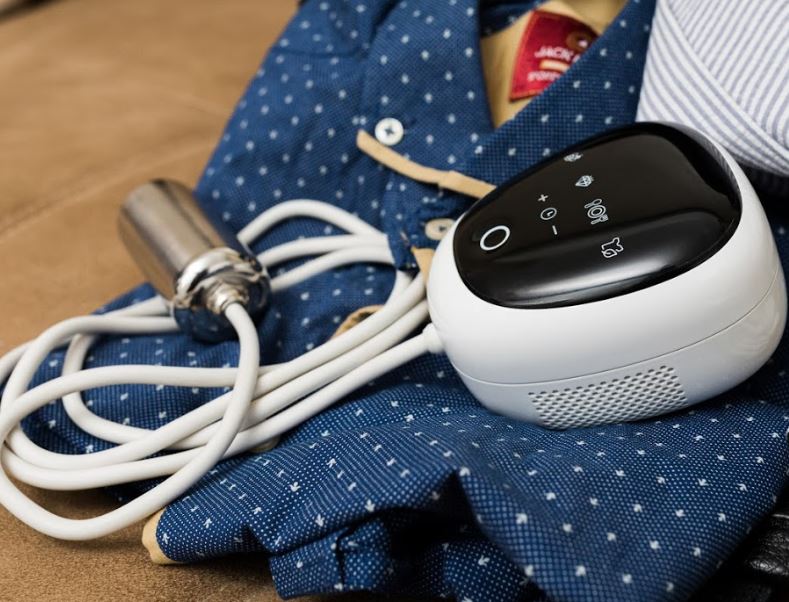
Design & Construction
The Ultrasona has a 2-part design. There’s a power supply/control panel, connected to a transducer by a 5-foot cord. The control panel measures about 4 inches on each side, although its curved, sloped design makes it a bit smaller. It’s constructed from white ABS plastic, with a glossy finish that’s easy to keep clean. The front panel is a transparent black, with soft-touch controls that are easy to operate, even with wet hands. There are four buttons to switch between four different modes: jewelry, dishes, clothes, and food. There’s also a power button, as well as up and down buttons to adjust the timer. Near the top, you’ll see a digital LCD display that shows the time remaining for cleaning.
The cord is rubberized and very flexible, with no stiffness. It’s connected to a stainless steel transducer that’s a 3.34 inch cylinder, 1.36 inches in diameter. Between the transducer and the control panel, the entire Ultrasona unit is very compact, which makes it ideal for travel. If you want to pack three days of clothes for a weeklong trip, the Ultrasona is your new best friend.
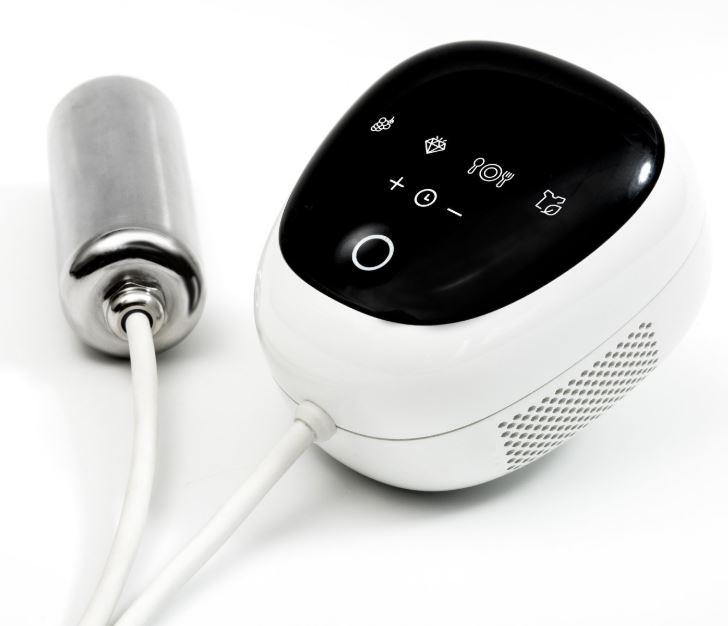
What sets the Ultrasona apart from other home ultrasonic cleaners is that it runs on 100 watts of power. Most other, similar cleaners operate at 20 to 50 watts. In other words, the Ultrasona is 2 to 5 times as powerful as your average home ultrasonic cleaner. Other cleaners might leave dirt and grease behind, especially in heavily soiled items. You won’t have any issues with the Ultrasona, which makes it well worth the investment. Speaking of the investment, keep in mind that the Kickstarter prices are in Hong Kong dollars. The actual exchange rate to US dollars varies, but it’s significantly less costly than it appears at first glance.
How Does it Work?
The Ultrasona has several different cleaning options. By default, you set a timer and leave it to run, then come back in 5 to 10 minutes. However, this isn’t always ideal if you want to clean something while you’re running errands. For example, what if you set the timer for 10 minutes and head off to work? In that case, you’ve just left your clothes or hygiene utensils sitting in dirty, soapy water for 8 hours. This somewhat defeats the purpose. The manufacturers have anticipated this, by creating a time delay mode. You can set a delay timer, so the Ultrasona can finish cleaning just as you’re getting back home.

One other nice thing is that the Ultrasona can be used in virtually any container. If you’re cleaning small objects, you can even use a small Tupperware bin. For larger objects, you can use a bucket or a sink. Essentially, any container that holds water can be used for cleaning. Once again, this makes it a great choice for travel. Why spend time running out to a laundromat when you can clean your clothes in the hotel sink?
The Ultrasona runs very quietly, making much less sound than you’ll hear from a washing machine or dishwasher. Even at this low volume, it produces an incredible 50,000 sound waves per second. This is enough to clean virtually any mess. Depending on your setting, it can be more or less aggressive. For example, the dishes setting is incredibly powerful, designed for removing heavy grease. Conversely, the fruit setting is gentler, so it can clean your produce without bruising it.
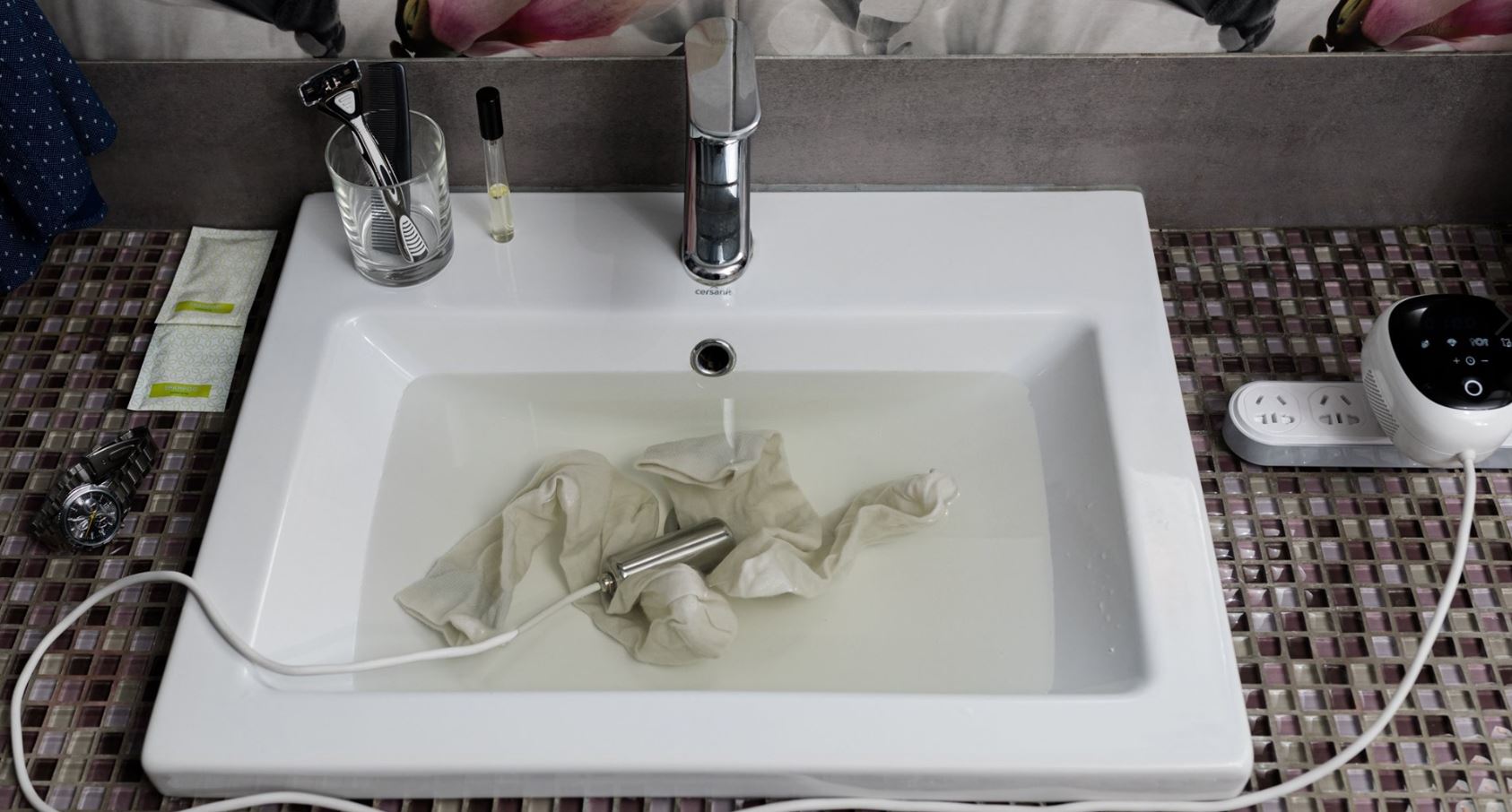
One other thing we like about the Ultrasona is that it’s energy efficient. For a comparable running time, it uses only 1/15th the energy of the average washing machine. It will also use 40 times less water, according to the manufacturer. The energy savings are real, but the water saving times need some context. A washing machine is designed to clean large loads of clothes, so of course it’s going to use more water. A sink or a bucket, by its very nature, uses less water, but it will also clean fewer clothes. In addition, you’ll still need to use water to rinse. With all of that being said, the Ultrasona is still more efficient than a washing machine. It’s also ideal for small loads; for example, washing a few pairs of socks. And you can’t clean your tools with a washing machine.
What Can it Clean?
So, what can the Ultrasona clean? We’ve already talked about clothes, but that doesn’t fully describe its capability. When used on clothes, it can clean deeply-soiled items without needing to pretreat your stains. This can help save you additional time. In addition, it’s gentle enough that you can even use it for cleaning your delicates.

In addition, the fruit and vegetable settings are much appreciated. In the past year, there have been three major recalls of Romaine lettuce alone due to bacterial contamination. So why not stay on the safe side and give your veggies a quick clean? In addition, many foods are treated with pesticides, and a simple rinse may not fully remove those contaminants. An ultrasonic cleaner will do a much better job than a simple, quick rinse.

Another significant advantage of an ultrasonic cleaner is for cleaning baby supplies. Sippy cups are an obvious target for heavy cleaning, but what about toys? As any parent knows, babies put their mouths on absolutely everything in sight. Give your baby toys an ultrasonic cleaning every few days, and you reduce their risk of becoming sick. All in all, the Ultrasona removes 99.99 percent of bacteria.
Personal hygiene tools are another obvious target for ultrasonic cleaning. To begin with, by their very nature, razors and tweezers can already become contaminated with bacteria. But most of these tools live in your bathroom. Every time you flush your toilet, some of the water gets aerosolized and becomes airborne. When this happens, fecal bacteria can get distributed on all of your most personal accessories. The Ultrasona can help eliminate this bacteria, ensuring that you don’t get yourself sick while you’re shaving or cleaning up.
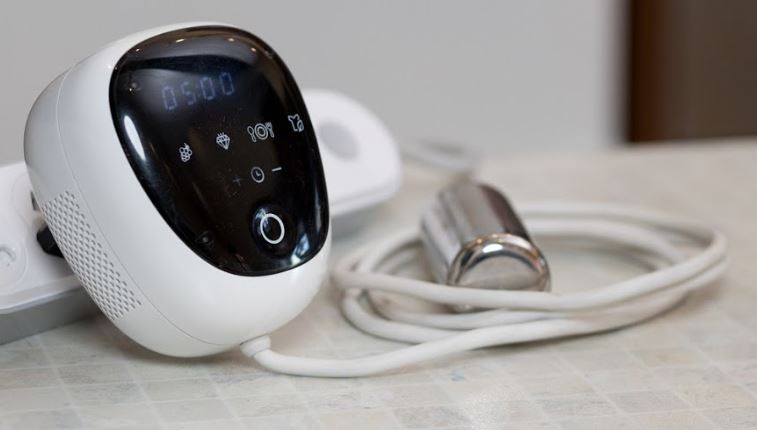
Cleaning tools is one of the most common uses of an ultrasonic cleaner. While the Ultrasona isn’t primarily designed for this purpose, it’s a great addition to your home shop. Cleaning your lawnmower’s carburetor? You can give it the same ultrasonic cleaning it would get at a professional shop, without the price tag. Got motor oil all over your favorite wrench? Wiping it down with shop towels will still leave some behind, and degreaser is inherently toxic. An ultrasonic cleaning, on the other hand, will eliminate virtually all the grease.
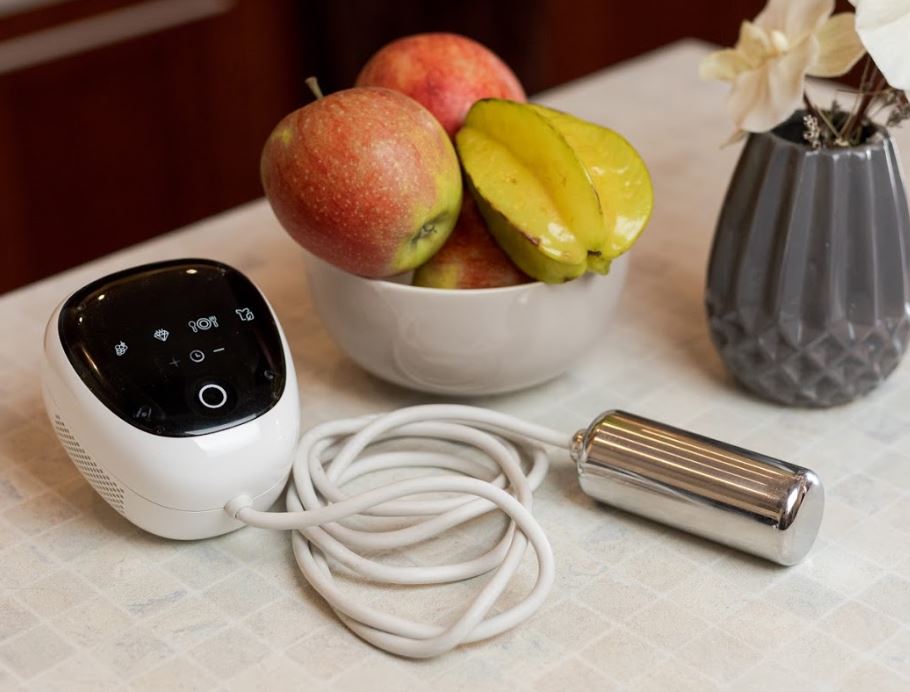
Finally, we should look at the benefits for cleaning dishes. For the most part, using the Ultrasona to clean all your dishes would be inefficient. But sometimes, pots and pans in particular can become badly soiled. Normally, cleaning one of these will require you to let it soak overnight in soap and water. Even then, you can end up needing to do a lot of heavy scrubbing to get rid of baked-on food. Using the Ultrasona, you can get shiny, clean pots and pans in just a few minutes.
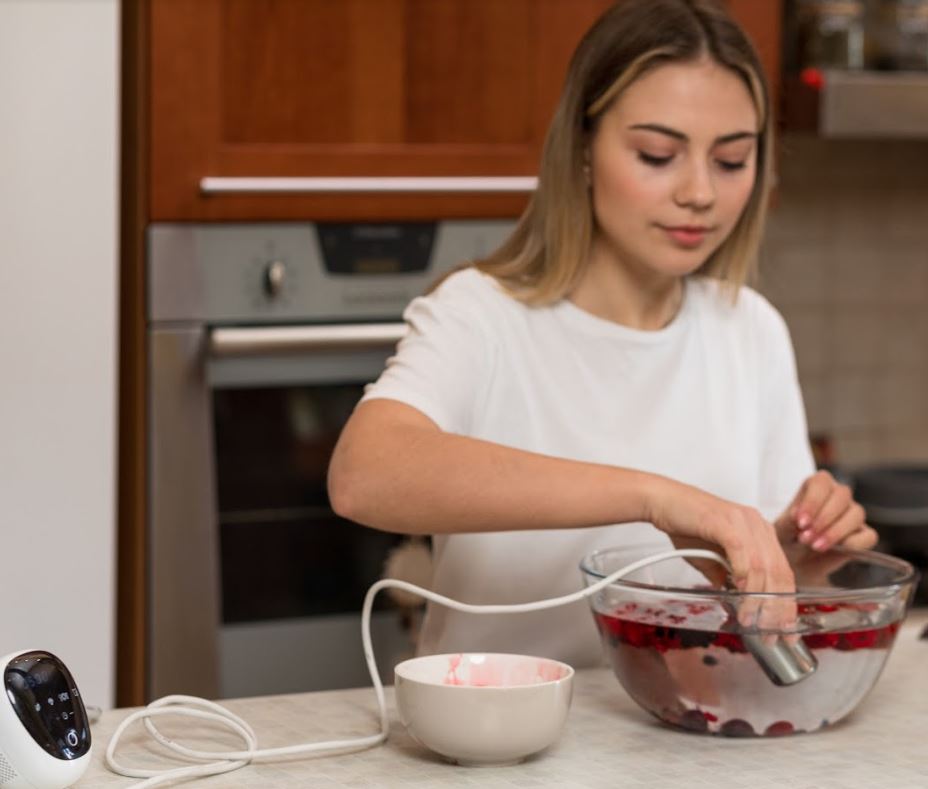
Final Verdict
So, is the Ultrasona: Ultrasonic Cleaning Device worth its salt? In general, yes. For a small, home-based ultrasonic cleaner, it’s exceptionally powerful. It costs a few more bucks than other options, but you’re getting a clear value for your money. It also disinfects as it cleans. This makes it more useful, as well as safer than just a simple degreaser. Use it on just about anything that needs to be cleaned.
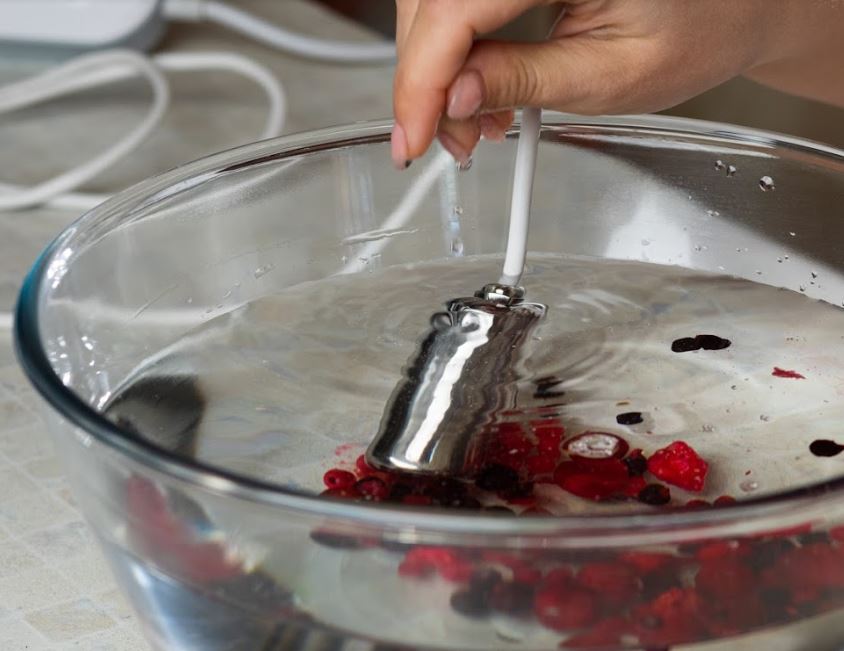
The one major downside is that you can’t clean a large container. This makes it unsuitable, for example, for cleaning a whole load of clothes in your laundry tub. That said, this isn’t what the Ultrasona was designed for. It’s intended for small-scale use, and it does a great job in that regard. In addition, the small size also makes it ideal for travelers. You can throw it in your carry-on bag and not have to worry about doing laundry on the road. All in all, if you’re looking for a home ultrasonic cleaner, the Ultrasona is well worth the price.
Meet Ry, “TechGuru,” a 36-year-old technology enthusiast with a deep passion for tech innovations. With extensive experience, he specializes in gaming hardware and software, and has expertise in gadgets, custom PCs, and audio.
Besides writing about tech and reviewing new products, he enjoys traveling, hiking, and photography. Committed to keeping up with the latest industry trends, he aims to guide readers in making informed tech decisions.

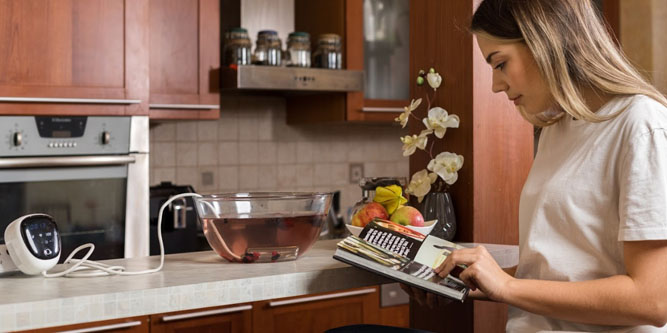
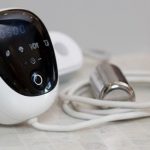
I would suggest not to use this to sanitize lettuce or any other bacterial contaminated foods. Some contamination actually ends up in the cells of the plant. Not on the outside, but inside where the disinfectant cannot reach.